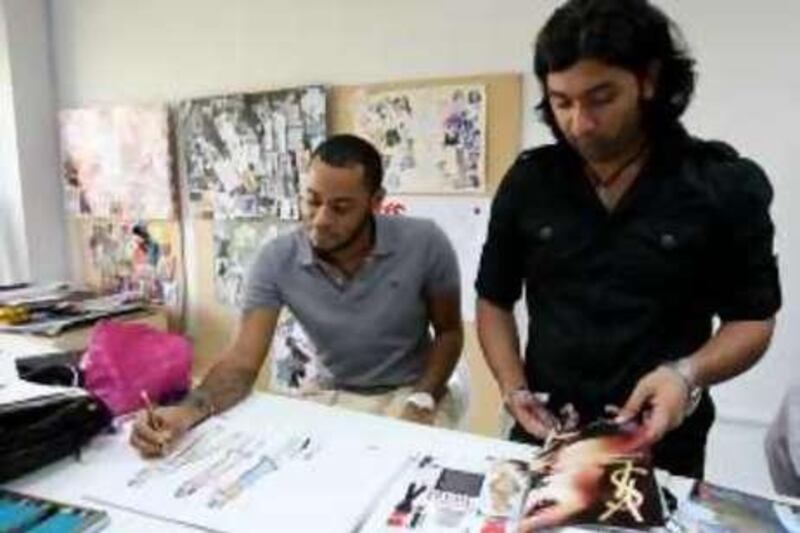In the world of high fashion, men have often led the way. The likes of Yves Saint Laurent, Gianni Versace, Paul Smith and Ralph Lauren provide the creative inspiration that has driven a multibillion-dollar industry. Visit fashion colleges in Europe or North America, and the male students are likely to outnumber the women. In the UAE, however, men have been much more reluctant to pick up a sketchbook and pencil.
At the French Fashion University Esmod International, in Dubai International Academic City, only six of the 66 undergraduate students are male. Several admit their parents were baffled when told of their son's ambition to work in fashion. Dmitri Ruwan, 18, a Sri Lankan, who names John Galliano as his favourite designer, said: "My parents didn't recognise fashion design when they were growing up. But I'm going to be famous. I know it. It's very difficult to establish yourself, but if you're talented you can.
"You need to develop a strong sense of your own design ethic- you cannot doubt yourself. It's like a doctor: you cannot think that you cannot complete a procedure and it will go wrong." Even those from families with a history in the clothing business faced parental resistance. "My family background is in textiles. My grandfathers were all working in textiles. But for them the image of a fashion designer was not clear. They say, 'he's a tailor, not a fashion designer'," said Salman Anjum, a 23-year-old from Pakistan, who already has a degree in journalism.
He said his father insisted on him graduating in something else but his ambition to work in fashion was always there. It took him four years to convince his family he should enrol in a design course. "It's odd in this country because people are not used to it," said Mohammed al Ghoul, 20, a Canadian of Palestinian descent, who says "men have a better eye for fashion". Tamara Hostal, the director of the Esmod campus, makes a similar point, saying men have "a very interesting eye" when it comes to designing clothes.
"It's different because they are men, and men love ladies by definition, so they love to create for ladies," she said. The rapid growth of the UAE, its mix of nationalities and its mall culture all appear to be increasing interest in fashion. And while the number of male students is still low at Esmod, it is growing. In the final year of its fashion design and pattern drafting degree course, only one of the 13 students is male. In the second year it is a similar story with only one male among 19 women. But in the recently enrolled first year, four men have joined the complement of 33 students. Several young Emirati men have also been asking about taking courses.
"Ten years ago, no one knew what the brands were and who the designers were. But five or six years ago, when the shopping centres came here, all the brands came as well," Mr Anjum said. While the influence of western clothing stores has exposed the UAE to the world of fashion, many students want to retain elements of their own origins in their designs. "I will take influences from my own culture, not somebody else's," Mr Ghoul said.
"I like the [Palestinian] scarf and I want to incorporate it into my designs and bring awareness of what's happening in Palestine. It's more than just a dress." His fellow student Zeid Nasser Abu Khalaf, 20, a Jordanian whose family owns a chain of clothes shops, hopes to create new designs for the hijab. "This is one of my aims - to design something for these women," he said. dbardsley@thenational.ae







